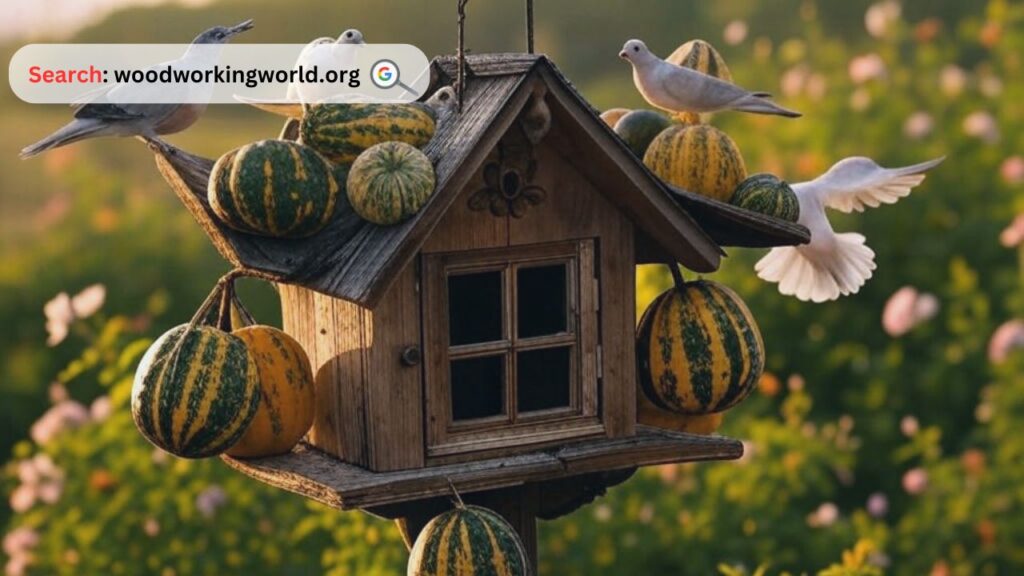Create the perfect birdhouse to attract doves to your backyard! Discover easy DIY tips, best materials, and ideal placement to make a cozy haven for doves. Start building today!
Doves are a symbol of peace and tranquility, and attracting them to your yard can add beauty and serenity to your surroundings. Providing the perfect birdhouse is key to enticing these gentle birds to nest in your garden. Unlike some bird species, doves prefer open spaces rather than enclosed boxes. Understanding their nesting habits and preferences can help you create the ideal environment for them.

In this guide, we’ll explore how to attract doves with the perfect birdhouse, covering essential features, materials, placement, and maintenance. Whether you are a bird enthusiast or a beginner looking to enhance your backyard, this comprehensive guide will help you create a welcoming space for doves.
👉 Build 16,000+ Projects with Step-by-Step Plans—No Big Workshop or Costly Tools Needed! Start Now!
Step-by-Step Guide to Building the Perfect Birdhouse for Doves
Step 1: Understand Dove Nesting Habits
Doves, particularly mourning doves, prefer open platforms rather than enclosed birdhouses. They often build their nests on tree branches, ledges, and even human-made structures like window sills and gutters. Unlike cavity-nesting birds, doves require a sturdy, flat surface to construct their nests using twigs, grass, and other plant materials.
Step 2: Choose the Right Materials
The materials used for your dove birdhouse should be natural and weather-resistant. Here are some of the best options:
- Wood – Cedar, pine, or plywood provide durability and insulation.
- Metal Mesh – Can be used as a base to allow easy drainage.
- Bamboo or Natural Fibers – Mimics their natural nesting environment.
Avoid using plastic or treated wood, as these materials can be harmful to birds.
Step 3: Design the Ideal Birdhouse
Since doves prefer open nesting areas, opt for a simple platform-style birdhouse rather than an enclosed box. Here are the key dimensions:
- Platform size: 8-10 inches wide
- Height from the ground: 6-10 feet
- Material thickness: At least ½ inch for durability
- Railing: A 1-inch railing around the platform helps secure the nest
A slight roof covering can provide protection from the elements while keeping the platform open and inviting.
Step 4: Select the Best Location
Placement is crucial for attracting doves. Follow these tips for an ideal spot:
- Choose a quiet and sheltered area away from predators.
- Position the birdhouse near trees or shrubs to provide natural cover.
- Face the platform slightly downward to prevent rainwater accumulation.
- Avoid placing it in direct sunlight to prevent overheating.
Step 5: Maintain and Monitor the Birdhouse
Regular maintenance ensures that doves keep returning. Here’s how:
- Clean the platform periodically to remove old nests and debris.
- Check for signs of predators and reinforce protection.
- Avoid using pesticides or chemicals near the birdhouse.
- Keep food sources like bird feeders nearby to attract doves.
Expert tips on Woodworking 🌿📦 Watch now!

Comparison Table: Traditional Birdhouse vs. Dove Nesting Platform
| Feature | Traditional Birdhouse | Dove Nesting Platform |
|---|---|---|
| Enclosure | Fully enclosed with entrance hole | Open platform |
| Preferred by Doves | No | Yes |
| Protection from Predators | High | Moderate |
| Material | Wood, Metal, Plastic | Wood, Bamboo, Metal Mesh |
| Ideal Placement | Tree trunks, poles | Ledges, beams, branches |
| Maintenance Level | Low | Moderate |
Additional Tips for Attracting Doves
- Provide a Water Source: Doves love to drink and bathe, so adding a birdbath can make your yard more inviting.
- Offer Nesting Materials: Place twigs, grass, and pine needles near the birdhouse to help doves build their nests.
- Minimize Disturbances: Avoid loud noises and excessive human activity near the nesting area.
- Use Natural Plants: Doves prefer areas with natural vegetation, so planting shrubs and native plants can enhance attraction.
Inspiring Quote
“A bird does not sing because it has an answer, it sings because it has a song.” – Maya Angelou
Frequently Asked Questions (FAQ)
1. Do doves use birdhouses?
Doves typically do not use traditional enclosed birdhouses. Instead, they prefer open nesting platforms or ledges where they can build their own nests.
2. What is the best height for a dove nesting platform?
The ideal height for a dove nesting platform is between 6 to 10 feet off the ground. This provides security from predators while keeping it accessible for the birds.
3. How can I protect dove nests from predators?
To keep doves safe, place the nesting platform near natural shelter such as trees or bushes. You can also add a small railing to prevent eggs or chicks from falling off.
4. Will doves return to the same nesting spot?
Yes, doves often return to the same nesting site if they feel safe. Keeping the area clean and undisturbed will increase the chances of them coming back.
5. What do doves eat, and should I provide food?
Doves primarily eat seeds such as sunflower seeds, millet, and cracked corn. Providing a bird feeder with these seeds can help attract them to your yard.

Conclusion
Attracting doves to your yard with the perfect birdhouse requires understanding their nesting habits and preferences. By providing an open, safe, and well-placed nesting platform, you can create a welcoming environment for these peaceful birds. With the right materials, proper maintenance, and a few extra enhancements like a water source and food, your yard can become a haven for doves year after year.
Start today by building your own dove-friendly birdhouse and enjoy the beauty and harmony that these gentle birds bring to your outdoor space.
👉 Click To Order Teds Woodworking With A 60-Money-back Guarantee From – Official Website